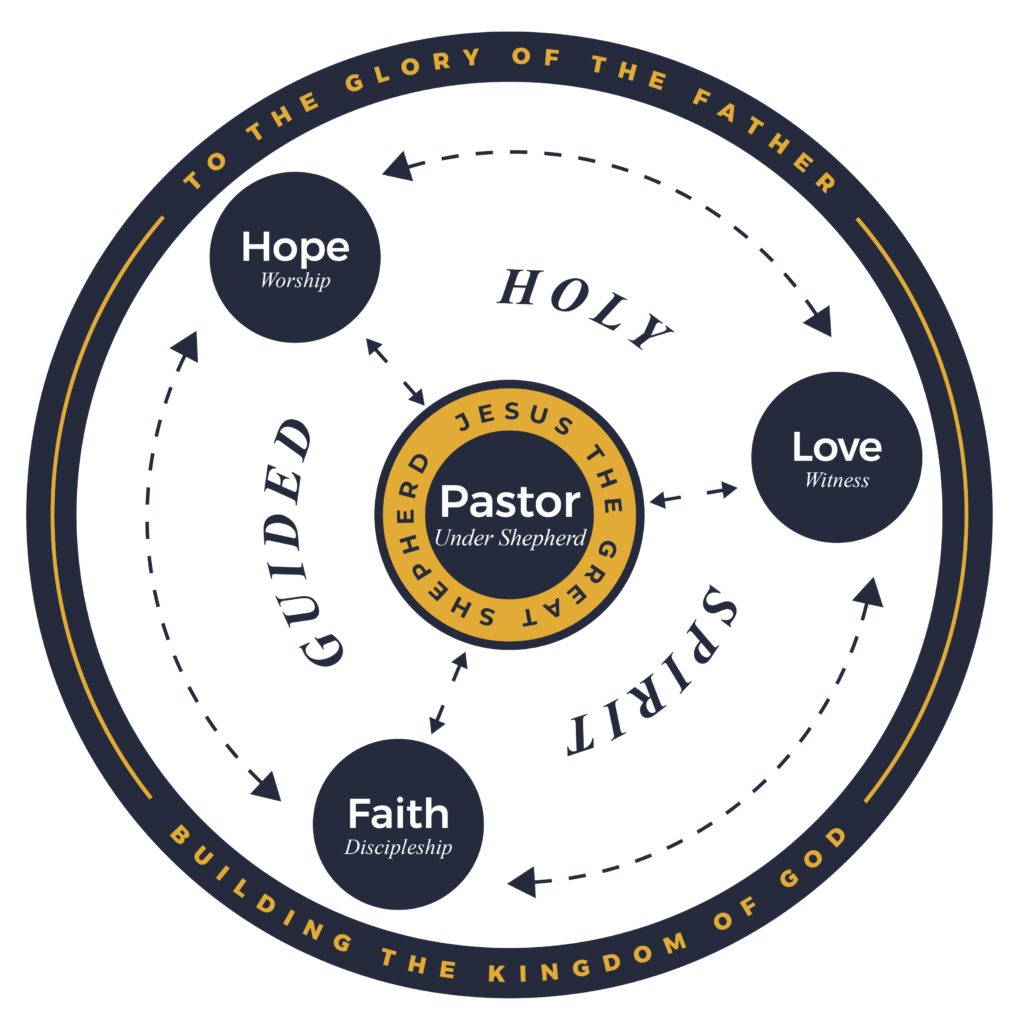Is the leadership in your church pastor-led, team-based; or team-based, pastor-led? Though the difference between these two models of congregational leadership may seem to be semantics, as we’ll see, there’s more to it. Here’s a related question for lead pastors: is your approach to leading your church primarily hands-on or is it primarily eyes-on?
Pastor-led, team-based churches
Most GCI pastors have been primarily hands-on in leading their churches, utilizing a pastor-led, team-based model of congregational leadership. With this approach, the pastor worked under a heavy burden of responsibility, some of it imposed by old denominational paradigms, some imposed by the pastor. If the church succeeded, the pastor received praise. If attendance or income declined, the pastor was responsible, and received blame. Reaching out to the community was the pastor’s responsibility, as was anointing the sick, visiting members in their homes or in the hospital, answering all questions and leading Bible studies. Many pastors took responsibility for the worship sequence, planning special events such as Christmas and Easter, and putting together and printing the weekly bulletin. No wonder many of our pastors have been in danger of burnout!
Note: the description of the pastor-led, team-based model is general. There is no intent to assign blame or to infer bad motives. Rather, the intent is to give a general picture of what this approach to congregational leadership looks like.
Believing a team-based approach was good ministry practice, some pastors formed teams to help them with the work for which they felt responsible. Deacons and deaconesses (now called ministry leaders) were set apart for works of service. Elders were ordained to aid in visiting, preaching and teaching. Some larger congregations assigned someone to be the youth pastor. In a few congregations, an elder served as the associate pastor and others served as assistant pastors.
While these teams were helpful in many areas, the pastor still carried the burden of responsibility and felt the need to be intimately involved (hands-on) in every aspect of ministry. Ministry leaders, elders and worship leaders still needed the pastor’s approval for most of the ministry initiatives and programs they planned.
In a pastor-led, team-based model of leadership, the pastor, being hands-on, likely put the worship team together, determined what outreach should be done, lead most of the discipleship classes and Bible studies, and had his or her hand in every aspect of ministry. A clear sign that this model was being utilized was that everyone felt they needed the pastor’s approval for any new idea or ministry initiative. There was an overall fear of disappointing the pastor or, worse, getting on the pastor’s “bad side.” In business terms, this is referred to as micro-management.
Team-based, pastor-led churches
This is the leadership model we urge GCI congregations to use. As shown in the infographic below, though the lead pastor still leads, they do not micro-manage. With this model, the pastor is much more eyes-on than hands-on. Yes, there are times the pastor needs to be hands-on, but a healthy pastor is eyes-on much more than hands-on. In other words, the pastor’s primary role in a team-based, pastor-led church is to provide an overview for the elders and ministry leaders to follow, rather than dictating their every action. We want our pastors to set the pace through this overview by helping their congregations achieve health through what we refer to as the three avenues of ministry:
- Love Avenue (witness)—mission and outreach—identifying a target community, building relationships, missional events.
- Hope Avenue (worship)—the Sunday worship service—intentional preparation, inclusive gathering, inspirational worship.
- Faith Avenue (discipleship)—discipling people in the faith—small groups, discipleship classes, Bible studies, missionary activities and events.
For an article in this issue on the three avenues of ministry, click here. We will expand on this material in future issues of Equipper. To download the full Team Based – Pastor Led infographic click here or on the image below.
In a team-based, pastor-led congregation, there will be multiple ministry teams, with each one led by a ministry leader who is commissioned to build a team to provide services related to a particular area of responsibility within one of the avenues of ministry. Though the lead pastor provides each ministry leader with clear guidelines for how they are to carry out their responsibilities, the pastor does not micromanage.
The pastor works with and encourages the team leaders to stay true to the congregation’s core values, vision and mission. Providing this sort of eyes-on (vs. hands-on) oversight frees the ministry leaders and their teams to creatively use their gifts and talents in serving the church.
The infographic above shows how team-based, pastor-led leadership functions in a healthy church. Note the connections between the lead pastor and the three avenues, and also among the avenues themselves. Note the calendar in the background—it’s a reminder that it takes time to build healthy ministry teams. Note also the piggy bank—it’s a reminder that team-building must be a priority in the congregation’s budget.
In the team-based, pastor-led model of congregational leadership, the primary role of the lead pastor is to Engage, Equip, Empower and Encourage. We’ll discuss these roles in detail in the February Equipper. In the meantime, click here to listen to a GC podcast about team-based leadership with GCI Superintendent of North America Michael Rasmussen.




I am smiling…?
Love this article!! So grateful to see where the good Lord has brought to today. I am all for this model of healthy ministry. THANK YOU 🙂
An excellent article. Very helpful as we go thru these changes.